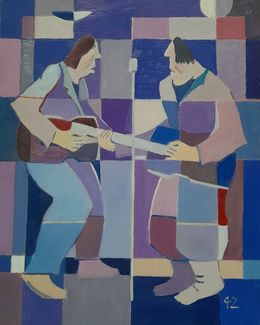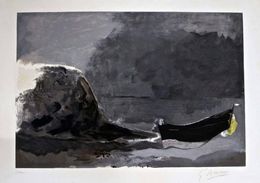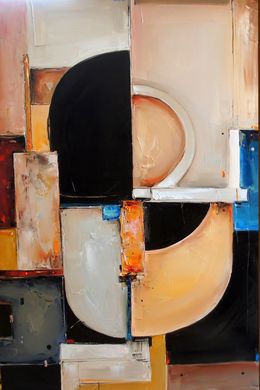
Cubism
Cubism developed in Paris in the early 20th century, under not only the watchful gaze of Pablo Picasso, but also Georges Braque. Although Braque is arguably a convert to Cubism, they are considered to be joint leaders of the movement.
The artists channelled Cézanne's idea that art should not directly reproduce nature, but rather exist alongside it. Between 1907 and 1912, the artists produced the first examples of “Analytical Cubism," where they conveyed a sombre and unexpected depiction of the world. Natural forms were reduced to geometric, inorganic and lifeless shapes. It was Louis Vauxcelles who coined the term "Cubism" in his criticism of Braque's work. He accused the painter of reducing everything "with geometric contours to cubes." Cubism was initially heavily disliked by critics and poorly received by the public; who was arguably not ready for such an avant-garde artistic concept. However, regardless of its criticism, the style was still adopted by many artists including Spanish painter, Juan Gris.
From 1911 onwards, Cubism became more aesthetically pleasing and therefore more accessible to the public. This was largely due to Fernand Léger's bright and vibrant works, which were a lot more optimistic than previous Cubist renderings. This lead to a second wave of Cubism, known as "Synthetic Cubism." Synthetic Cubist works lacked depth and focussed more on composition, shape, and bright colours, as opposed to the systematic approach of Analytical Cubism. The aesthetic of Synthetic Cubism proved a lot more popular than previous years; revolutionising 20th century modern art.
Pablo Picasso: In 1907, Pablo Picasso unveiled what is considered to be the first Cubist painting, Les Demoiselles d'Avignon. He created this painting as a response to his friend and rival Henri Matisse's Bonheur de Vivre. Picasso was particularly inspired by primitive art and Paul Gauguin. He frequently painted controversial subjects, such as prostitutes in brothels.
Georges Braque: along with Picasso, Braque was the spearhead of the movement. In 1908, during his stay in l'Estaque, a district of Marseille, he painted several cubist landscapes. These landscapes piqued the interest of art dealer, Daniel Henri Kahnweiler, who organised the first ever Cubist exhibition in his gallery.
Fernand Léger: the artist introduced bright colours and compositions to his works; rendering them more optimistic than the previous Cubist works by Braque and Picasso. The Exit of the Russian Ballet is one of his most notable works.
Juan Gris: The young Spanish painter painted his first cubist painting in 1912. His Portrait of Pablo Picasso is one of his most famous works. The depiction of Picasso is less harsh and much brighter than in the early Cubist works.
Almost all the major artists who succeeded in finding a distinctive style before the First World War, would have experienced a Cubist phase at one time or another. This includes figures such as: Marcel Duchamp, Francis Picabia, František Kupka, Robert Delaunay and Piet Mondrian. However, Cubism has hugely impacted the history of art in both the 20th and 21st centuries, and the influence of this movement can still be felt today. Discover contemporary artists such as Vik Muniz, Miguel Guia, Julien Raynaud and Timothy Archeron who were inspired by this revolutionary movement.
Save your search and find it in your favorites
Save your search to find it quickly
Saved search
Your search is accessible from the favorites tab > My favorite searches
Unsaved search
A problem occurred



De profil, homme à la cigarette
Zafi
Painting - 100 x 80 x 2 cm Painting - 39.4 x 31.5 x 0.8 inch
€4,500
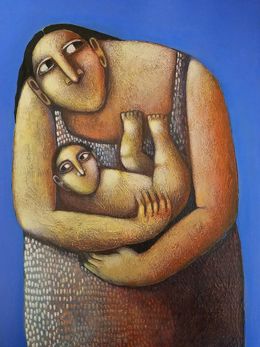

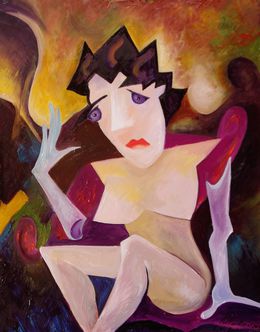

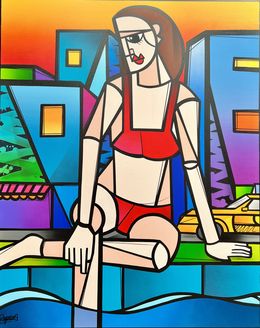

Arbres fleuris dans l'Estérel
Claude Schürr
Painting - 81 x 100 x 2.5 cm Painting - 31.9 x 39.4 x 1 inch
€8,500

Détente matinale, Nice
Claude Schürr
Painting - 100 x 81 x 2.5 cm Painting - 39.4 x 31.9 x 1 inch
€8,500

Les palmiers du Suquet, Cannes
Claude Schürr
Painting - 73 x 92 x 2.5 cm Painting - 28.7 x 36.2 x 1 inch
€7,200
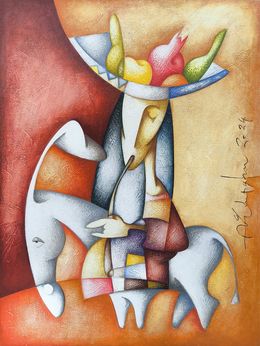
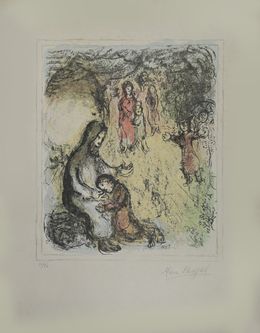
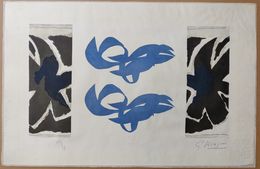
Si je mourais là-bas (If I Died There) (Vallier 181)
Georges Braque
Print - 45.7 x 71.8 x 0.1 cm Print - 18 x 28.3 x 0 inch
€3,680
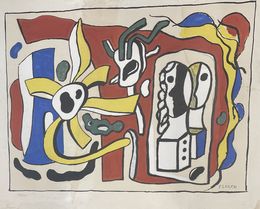

Le Port-Canto fleuri, Cannes
Claude Schürr
Painting - 54 x 65 x 2.5 cm Painting - 21.3 x 25.6 x 1 inch
€4,700

Les Ateliers de Chagall
Marc Chagall
Print - 48.5 x 38.5 x 6 cm Print - 19.1 x 15.2 x 2.4 inch
€15,000

Imagination play-IV(Homage to Jean Dubuffet)
Stanislav Bojankov
Painting - 60 x 80 x 2 cm Painting - 23.6 x 31.5 x 0.8 inch
€950

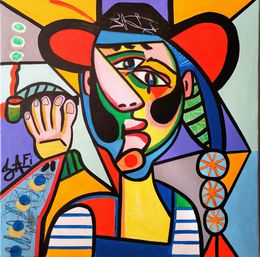
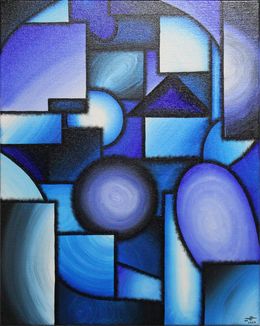
Formes abstractives bleues
Jonathan Pradillon
Painting - 50 x 40 x 1.5 cm Painting - 19.7 x 15.7 x 0.6 inch
€350
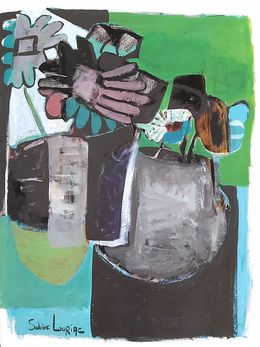
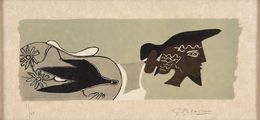


Le Peintre Devant Le Village I (Mourlot 603)
Marc Chagall
Print - 64.8 x 47.6 x 0.3 cm Print - 25.5 x 18.75 x 0.1 inch
€16,428
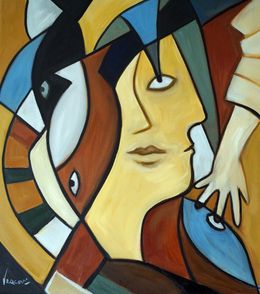

Les Ames Mortes by N. Gogol
Marc Chagall
Print - 40 x 30 x 0.3 cm Print - 15.7 x 11.8 x 0.1 inch
€72,000

David and Absalom - from 'The Bible'
Marc Chagall
Print - 53.5 x 39 x 0.1 cm Print - 21.1 x 15.4 x 0 inch
€8,500
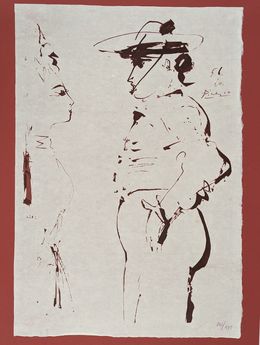

Composition (Nature Morte aux Verres V11)
Georges Braque
Print - 56 x 37 x 0.1 cm Print - 22 x 14.6 x 0 inch
€16,500

La Place aux Herbes ( Série Souvenir Néo Cubiste )
Julien Raynaud
Painting - 81 x 100 x 4 cm Painting - 31.9 x 39.4 x 1.6 inch
€2,800
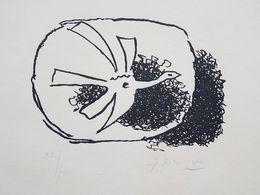
Août, oiseau dans son nid
Georges Braque
Print - 37 x 47.5 x 0.2 cm Print - 14.6 x 18.7 x 0.1 inch
€2,400

Monument-VII (The Pollock-Krasner Foundation Grant, NY, 2007)
Stanislav Bojankov
Print - 68 x 48 x 0.1 cm Print - 26.8 x 18.9 x 0 inch
€1,000
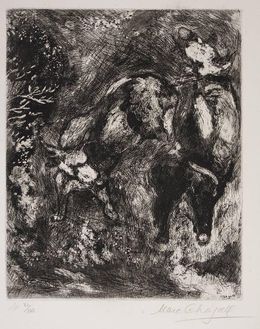
Les Deux Taureaux et une Grenouille
Marc Chagall
Print - 42 x 33.5 x 0.1 cm Print - 16.5 x 13.2 x 0 inch
€3,800



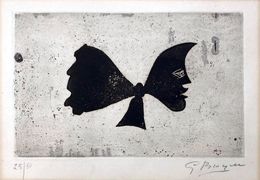
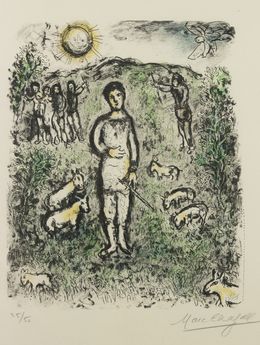
Joseph and his Brothers
Marc Chagall
Print - 36.5 x 30 x 0.1 cm Print - 14.4 x 11.8 x 0 inch
€10,500
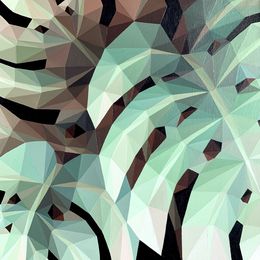
Monstera leaves
Maria Tuzhilkina
Painting - 49.8 x 49.8 x 1.5 cm Painting - 19.6 x 19.6 x 0.6 inch
€1,643

Mujer Antigua
Francisco Muñoz Tejeida
Painting - 206 x 165 x 2 cm Painting - 81.1 x 65 x 0.8 inch
€4,618
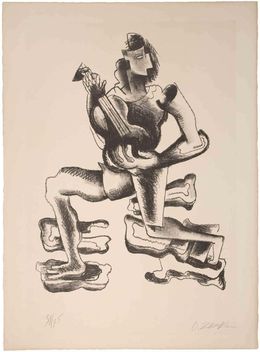

Trois Hommes se Disputant une Femme Devant un Emir
Pablo Picasso
Print - 22 x 31.75 x 0.2 cm Print - 8.7 x 12.5 x 0.1 inch
€10,000
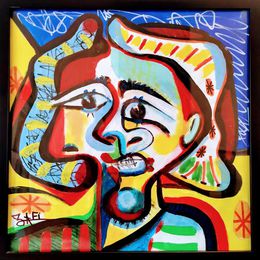
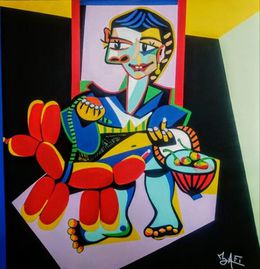
La petite fille et son chien
Zafi
Painting - 100 x 100 x 2 cm Painting - 39.4 x 39.4 x 0.8 inch
€5,000
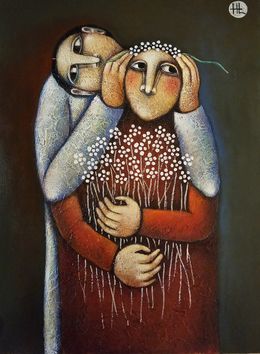
Guardian of the Heart
Liana Asatryan
Painting - 40 x 30 x 2 cm Painting - 15.7 x 11.8 x 0.8 inch
€563
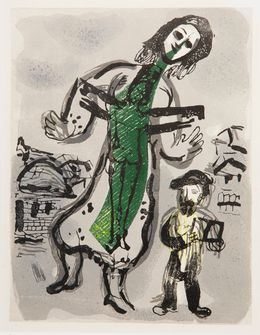
Où est le jour (Poème #13)
Marc Chagall
Print - 34 x 26 x 1 cm Print - 13.4 x 10.2 x 0.4 inch
€10,000


Port aux couleurs fauves
Céline Dabot
Painting - 81 x 60 x 2 cm Painting - 31.9 x 23.6 x 0.8 inch
€900
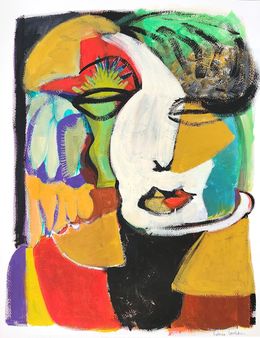
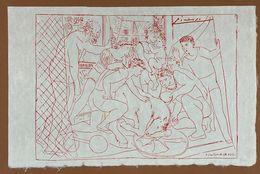
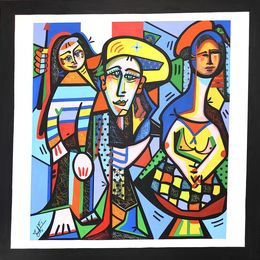

Le cordonnier (pour les Fables de la Fontaine)
Marc Chagall
Print - 29.5 x 24 x 0.2 cm Print - 11.6 x 9.4 x 0.1 inch
€2,600
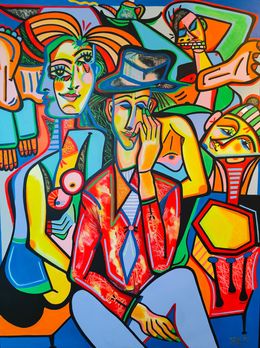
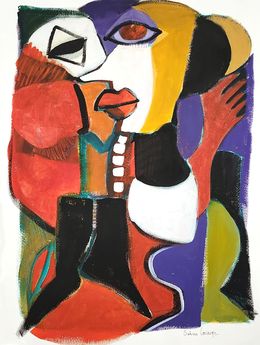
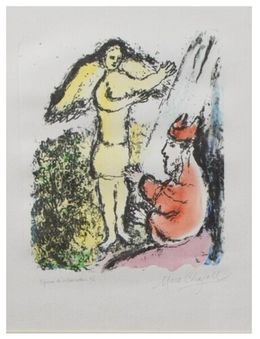
Angel Ariel Prospero enchanter tempest
Marc Chagall
Print - 26 x 32 x 0.2 cm Print - 10.2 x 12.6 x 0.1 inch
€11,300
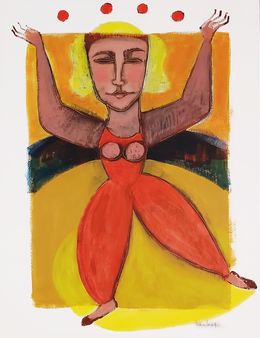
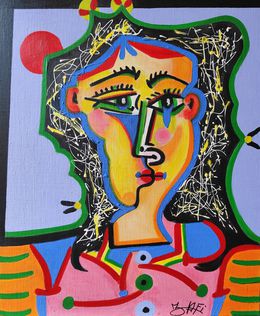

Déjeuner au soleil, Grasse
Claude Schürr
Painting - 116 x 89 x 2.5 cm Painting - 45.7 x 35 x 1 inch
€10,800

Fin d'orage, St Guénolé
Claude Schürr
Painting - 73 x 92 x 2.5 cm Painting - 28.7 x 36.2 x 1 inch
€7,200
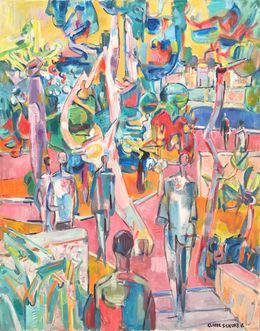

Eaux vertes au port Canto, Cannes
Claude Schürr
Painting - 73 x 92 x 2.5 cm Painting - 28.7 x 36.2 x 1 inch
€7,200

Tour Eiffel brumeuse
Claude Schürr
Painting - 92 x 73 x 2.5 cm Painting - 36.2 x 28.7 x 1 inch
€7,200


L'esplanade, Palais des Papes en Avignon
Claude Schürr
Painting - 73 x 60 x 2.5 cm Painting - 28.7 x 23.6 x 1 inch
€6,200

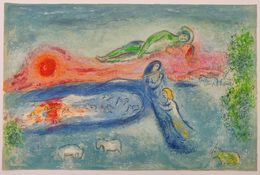
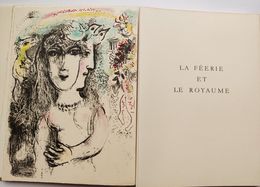
The complete set of 10 lithograp of La Féerie et le Royaume
Marc Chagall
Print - 31.2 x 23.4 x 4 cm Print - 12.3 x 9.2 x 1.6 inch
€12,800

Cubist Portrait
Zakhar Shevchuk
Painting - 112 x 106 x 2 cm Painting - 44.1 x 41.7 x 0.8 inch
€3,900
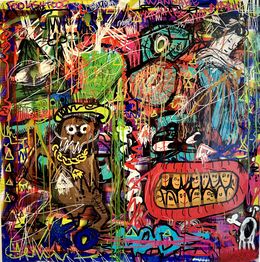
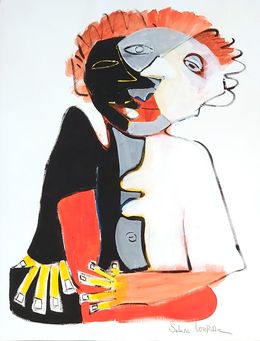
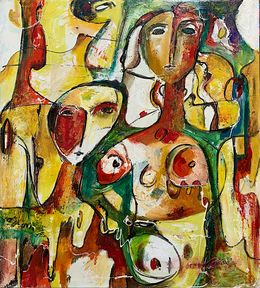
Secret Love II
Kajazun (Kajo) Avetisyan
Painting - 66 x 59 x 2 cm Painting - 26 x 23.2 x 0.8 inch
€990
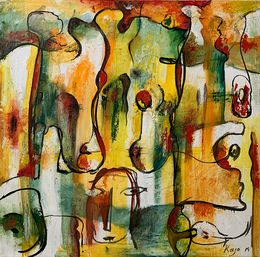
Happy Emotion II
Kajazun (Kajo) Avetisyan
Painting - 70 x 70 x 2 cm Painting - 27.6 x 27.6 x 0.8 inch
€1,100 €990
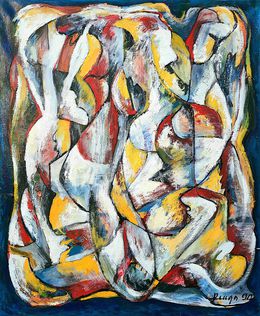
Secret Situation
Kajazun (Kajo) Avetisyan
Painting - 70 x 58 x 2 cm Painting - 27.6 x 22.8 x 0.8 inch
€990
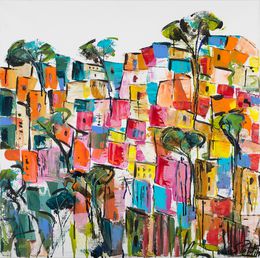

Montagne Sainte Victoire, seen from Montbriand, after Cezanne (Pictures of Pigment)
Vik Muniz
Photography - 101.6 x 125.7 cm Photography - 40 x 49.5 inch
€34,734

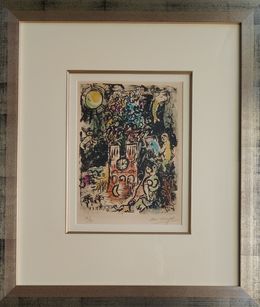
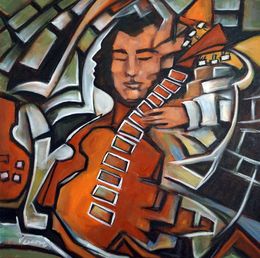


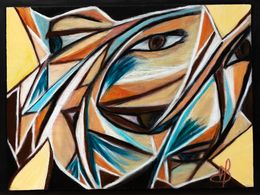
Les visionnaires du temps - Abstraction en mouvement
Dalila Hachelaf
Painting - 45 x 50 x 1 cm Painting - 17.7 x 19.7 x 0.4 inch
€500


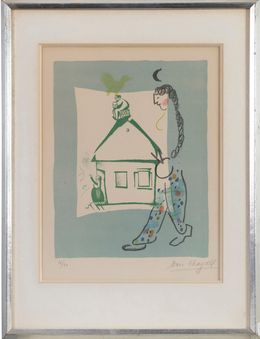
The House in My Village
Marc Chagall
Print - 32 x 25.5 x 0.1 cm Print - 12.6 x 10 x 0 inch
€12,600 €10,710

Le Cirque Fantastique
Marc Chagall
Print - 41.5 x 52 x 0.3 cm Print - 16.3 x 20.5 x 0.1 inch
€13,000
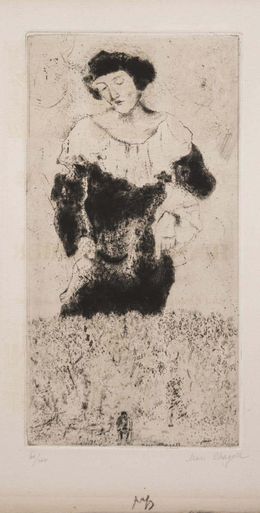

Improvisation-I
Stanislav Bojankov
Painting - 60 x 80 x 2 cm Painting - 23.6 x 31.5 x 0.8 inch
€1,000
